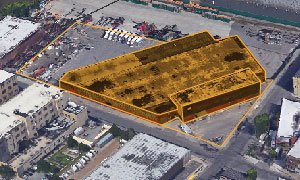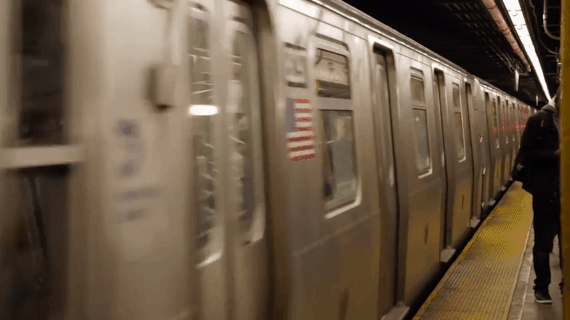Brooklyn residents panicked when MTA officials announced in January that the L train — the engine that charges North Williamsburg and Bushwick — would potentially shut down for over 18 months to allow for critical repairs to the Canarsie Tube.
Merchants from Bedford to Jefferson howled that there’d be fewer takers for their $4 PBR + pickleback shot specials, and landlords wondered if the creative businesses that have sprouted around the L train stations would wither away.
Renters, who comprise the vast majority of residents, might flee for better-connected ‘hoods, flattening or pushing down rents and tipping over-leveraged multifamily owners into financial disarray, the narrative went.
The Real Deal spoke to residential and commercial brokers, developers and business owners to gain some insights into what North Brooklyn will look like after 2018, without the L train (or, as in the MTA’s alternate plan, an L train with no night and weekend service for five years).
Here’s what they had to say:
Residential rentals and sales:
Approximately 78 percent of housing units in Williamsburg, Greenpoint and Bushwick are occupied by renters, according to data from the 2014 Housing and Vacancy Survey, and they’re likely to be the among the most affected by transit trauma. Landlords will have to admit that short-term tenants have better options for the money, and adjust rental rates accordingly, real estate professionals said.

Jonathan Miller
“This is a zero-sum game. What comes at a loss to this market is a gain in another neighborhood that doesn’t have a commuting challenge,” said Jonathan Miller, head of real estate appraisal firm Miller Samuel. “I think that’s the first response and why rents will drop.”
Andrew Rose, a broker at Mirador Real Estate and a Williamsburg resident, said the market changes would be immediately noticeable.
“In the first couple of months [landlords] would drop their prices,” he said. “But at some point you just can’t cover it.”
According to MNS Real Estate‘s latest rental market report, the average rental price for a one-bedroom apartment in Williamsburg reached $3,153 in February, up from $3,065 during the same period last year.
It’s tricky to say how much rental prices would fall starting in 2018, but some in the industry believe landlords are in for a double digit drop. Rose sees a 15 percent reduction for landlords.
Miller drew the parallel to the Second Avenue subway in Manhattan, where ongoing construction has resulted in single-digit rental drops in some pockets. He believes the fall would be greater in Brooklyn due to a lack of alternative transit options.
“It would be a stretch to think that rents would not be impacted to a greater degree, meaning more than a single digit modification over the next two years,” he said.
It’s not an insignificant concern for the developers bringing 995 rental units to Williamsburg in the next two years, according to an analysis from CityRealty.
Miron Properties CEO Jeffrey Schleider represents a group of developers who are collectively delivering over 200 rental units coming to the market in Williamsburg over the next two years. If prices in the neighborhood were to fall, he said those developers would be able to sustain one-to-three years of reduced rent.
“If there’s a full closure, we would advise our developers to reduce their rates on existing tenants in order to keep them in place during this time,” Schleider told TRD. Any reduction in rents would be determined by how inconvenienced the tenants are and what alternatives the MTA develops, he added.
Schleider said most landowners will weather the storm, but warned that developers who paid a very high price per square foot could be at risk of losing tenants and potentially facing foreclosure.

A rendering of 2 North 6th Place in Williamsburg
Not all think there will be major hiccups.
“It will have a short-term impact on rents, and it will be modest,” said Paul Travis, managing director of Washington Square Partners, adding that developers are “looking five-to-10 years from now.”
Some developers are ahead of the curve of the shutdown. Steve Charno, President of Douglaston Development, has already promised that staff at the 41-story 1N4TH will drive tenants from the building’s front steps to the JMZ train when the repairs begin. Douglaston also has a 40-story, 554-unit rental tower rising next door at 2 North 6th Place. The 500,000-square-foot project is expected to open its door to residents in 2017.
“As soon as we realized our residents might have some anxiety about how they would get to work, we decided [free shuttle service] would be in their best interest,” Charno told TRD.
On the sales side, 57 new condominium buildings containing 1,464 units are in the pipeline for Williamsburg, according to an analysis by TRD of filings submitted to the Attorney General’s Office since 2014.
One of those new buildings is a rental-to-condominium conversion at 184 Kent Avenue, undertaken by Kushner Companies, Rockpoint Group and LIVWRK. The 338-unit project has a projected sellout of $414 million, TRD reported.

A rendering of 184 Kent Avenue in Williamsburg
New development projects, like 184 Kent, are likely to be negatively impacted more than resales, according to industry veterans.
“In a resale situation, inventory is relatively tight versus the new development market, so it’s maybe less of a factor,” Miller said. “Maybe sellers are more negotiable on the resale side.”
Donna Olshan, president of Olshan Realty, said the effect on the sales market in Williamsburg could be similar to that of the neighborhoods near the long-planned Second Avenue subway.
“There are many sales that didn’t happen around the Second Avenue subway because people couldn’t take the construction that happened,” Olshan said. “There are people that bought at a discount, but there are a whole lot of people who said, ‘forget it.’”
Still, it’s all relative.
“Whatever the negative impact on the sales side, it will be far less than the impact to rentals,” Miller said.
Retail
More than any other submarket, small retailers with razor-thin profit margins are likely to be sucking wind when the MTA’s hard hats tape off the subway stations.

Tim King
CPEX Real Estate co-founder Tim King compared the impending shutdown to the Titanic striking the iceberg — at least for third-class passengers.
“A small tenant who’s well positioned, who serves their client base can presumably survive,” he said. “But someone who opened up recently, and anticipates a steady flow of clients, customers and business coming from Manhattan on the L train— should there be a permanent shutdown— it’s going to have a significant, catastrophic impact on their business.”
King expects small business owners centered around the Bedford Avenue stop will fight for slimmer retail rents. The average rents, at $350 per square foot, are the highest in Brooklyn.
“A lot of people [are] refiguring what’s appropriate in terms of the market rent, and it’s likely that existing tenants are going to go hat in hand and say, ‘Listen, we can’t survive on the current flow of business, we need a reduction.’”
Halstead Property broker Warner Lewis, who also owns Donna, a cocktail bar in South Williamsburg, said businesses that are dependent on foot traffic and steady stream of L train straphangers are the most likely candidates for closure.
[vision_pullquote style=”3″ align=””] CPEX Real Estate co-founder Tim King compared the impending shutdown to the Titanic striking the iceberg — at least for third-class passengers. [/vision_pullquote]
“When you have a margin business, you can’t take a 30 percent drop,” Lewis said. Still, he predicted the completed construction would eventually be a “net positive” for Williamsburg. “It’s way too established of a neighborhood to long term be affected by this.”
Developers who haven’t yet secured tenants for their retail projects, as well as smaller tenants paying a premium to be on the Bedford Avenue submarket, are most at risk, according to Marcus & Millichap broker Shaun Riney.
The average price per square foot for a retail building in Williamsburg was $4,143 in 2015, more than double the 2014 average, according to TerraCRG, with developers including RedSky Capital paying record prices for Property Off The Bedford Avenue stop.
Last year, the firm led by Benjamin Bernstein and Benjamin Stokes, paid $20.7 million for a 1,600-square-foot property at 204-206 Bedford Avenue. Joe Sitt’s Thor Equities is in contract to buy a development site from the Salvation Army for $36 million, although the developer may now be looking to back out of the deal, with some industry chatter that the shutdown is giving them cold feet.
Office
While Williamsburg is mostly known for its retail and residential markets, big-name developers such as Toby Moskovits’ Heritage Equity Partners are looking to build major office properties in the neighborhood’s industrial-zoned areas.

Rendering of 25 Kent Avenue in Williamsburg
“If an office tenant is going to come in, they’re going to do a long term deal,” said Newmark Grubb Frank Knight broker Whitten Morris, the listing agent for 25 Kent Avenue, Moskovits’ 480,000-square-foot, mixed-use project. In fact, he said, fixing the L train could bring more confidence since there would no longer be something “hanging over the market.”
Investors are also making bold moves to expand the burgeoning office submarket on the East Williamsburg-Bushwick border.

101 Varick Avenue in East Williamsburg
The area is seeing big development plays, including the Lincoln Property Company’s office-and-retail project at 455 Jefferson Street, the warehouse conversion at 456 Johnson Street by Sequoia Development Group, and the Normandy Real Estate Partners-led office-and-retail project at 333 Johnson Avenue. Even Simon Dushinsky’s Rabsky Group, one of Brooklyn’s most prolific developers, is branching out with its first office project, a warehouse-to-office conversion at 101 Varick Street that could house up to 285,000 square feet of space.
A full shutdown could be a “disaster and a catastrophe for everyone,” including developers and tenants, said Citi Habitats’ Chris Havens, who is overseeing leasing at 456 Johnson Avenue, three blocks from the Morgan Avenue stop on the L line.
Asking rents for office space in East Williamsburg average $40 to $50 per square foot.
“The office market in Brooklyn has been pretty intense lately, and this may be a year where [rent] plateaus, takes a break,” Havens said.
The L train shutting down won’t necessarily stop developers who have already moved ahead, though. “Everyone I know that’s doing [an office project] is already going forward,” Havens said. “The only thing that’s for sale around here was for sale a few months ago, and people are going ahead.”
Owners of creative commercial spaces, which include film and television stages, art studios and offices, in East Williamsburg and Bushwick are spooked.
“There will be no businesses if they shut the L train down,” Thomas Dodd, who operates Brooklyn Fire Proof’s creative spaces in Bushwick, said at a community board meeting in February. “You will devastate the entire community… I will have to shut down all of my businesses, relieve all of my employees, and move, quite frankly, from Brooklyn. There’s just no way around this. Zero.”
The MTA hasn’t said when it will announce its decision about the possible closure.
Ariel Stulberg contributed reporting.
